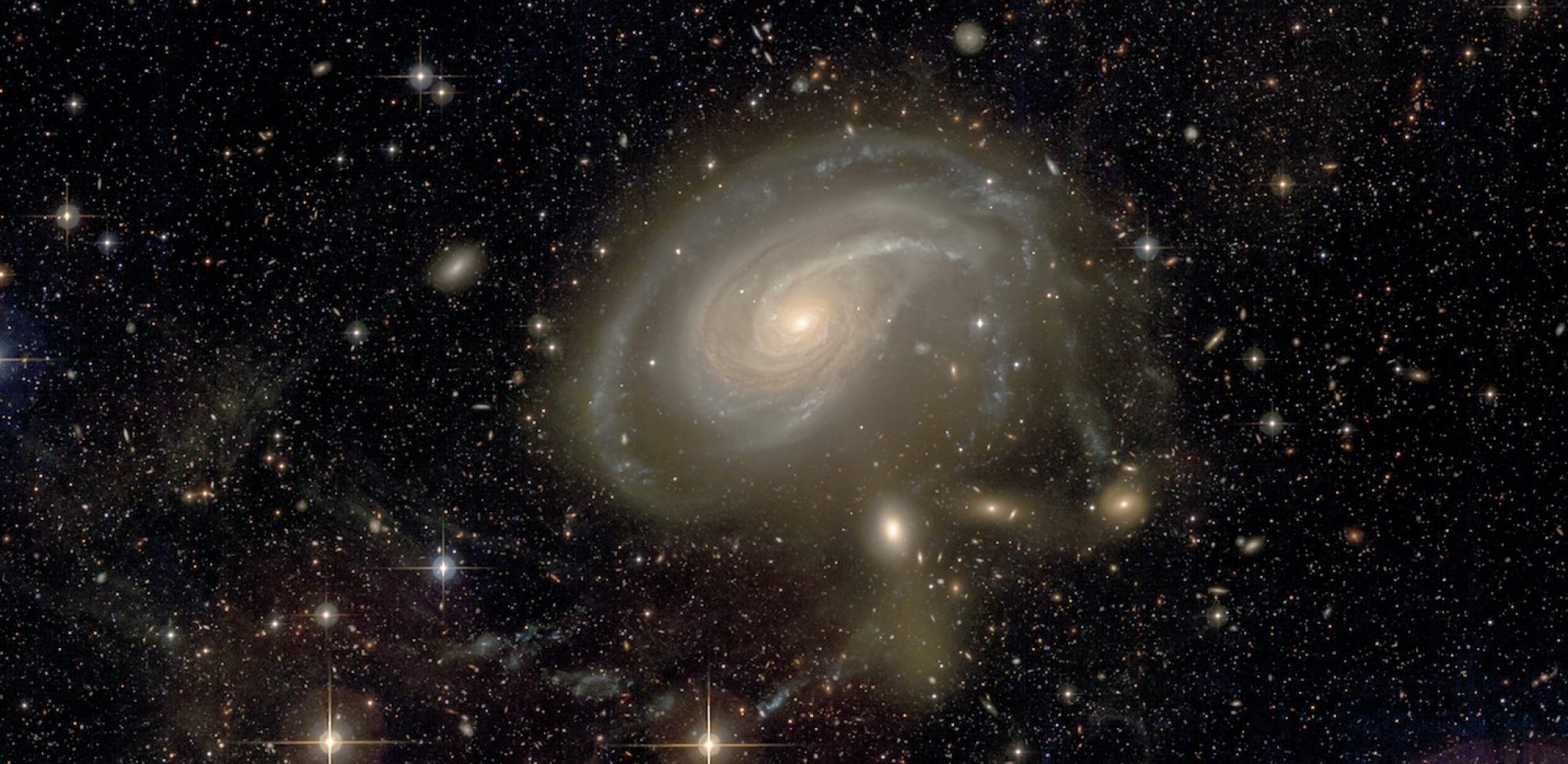
Stellar shells around galaxies could provide precious insights into their assembly history. However, their formation mechanism remains poorly empirically constrained, regarding in particular the type of galaxy collisions at their origin. We present MUSE at VLT data of the most prominent outer shell of NGC 474, to constrain its formation history. The stellar shell spectrum is clearly detected, with a signal-to-noise ratio of ∼65 pix-1. We used a full spectral fitting method to determine the line-of-sight velocity and the age and metallicity of the shell and associated point-like sources within the MUSE field of view.
We detect six globular cluster (GC) candidates and eight planetary nebula (PN) candidates that are all kinematically associated with the stellar shell. We show that the shell has an intermediate metallicity, [M/H] = -0.83-0.12+0.12, and a possible α-enrichment, [α/Fe] ∼ 0.3. Assuming the material of the shell comes from a lower mass companion, and that the latter had no initial metallicity gradient, such a stellar metallicity would constrain the mass of the progenitor at around 7.4 × 108 M☉, implying a merger mass ratio of about 1:100. However, our census of PNe and earlier photometry of the shell would suggest a much higher ratio, around 1:20. Given the uncertainties, this difference is only significant at the ≃1σ level. We discuss the characteristics of the progenitor, and in particular whether the progenitor could also be composed of stars from the low-metallicity outskirts of a more massive galaxy. Ultimately, the presented data do not allow us to put a firm constraint on the progenitor mass. We show that at least two GC candidates possibly associated with the shell are quite young, with ages below 1.5 Gyr. We also note the presence of a young (∼1 Gyr) stellar population in the center of NGC 474. The two may have resulted from the same event.
Fensch et al., 2020, A&A 644, 164

